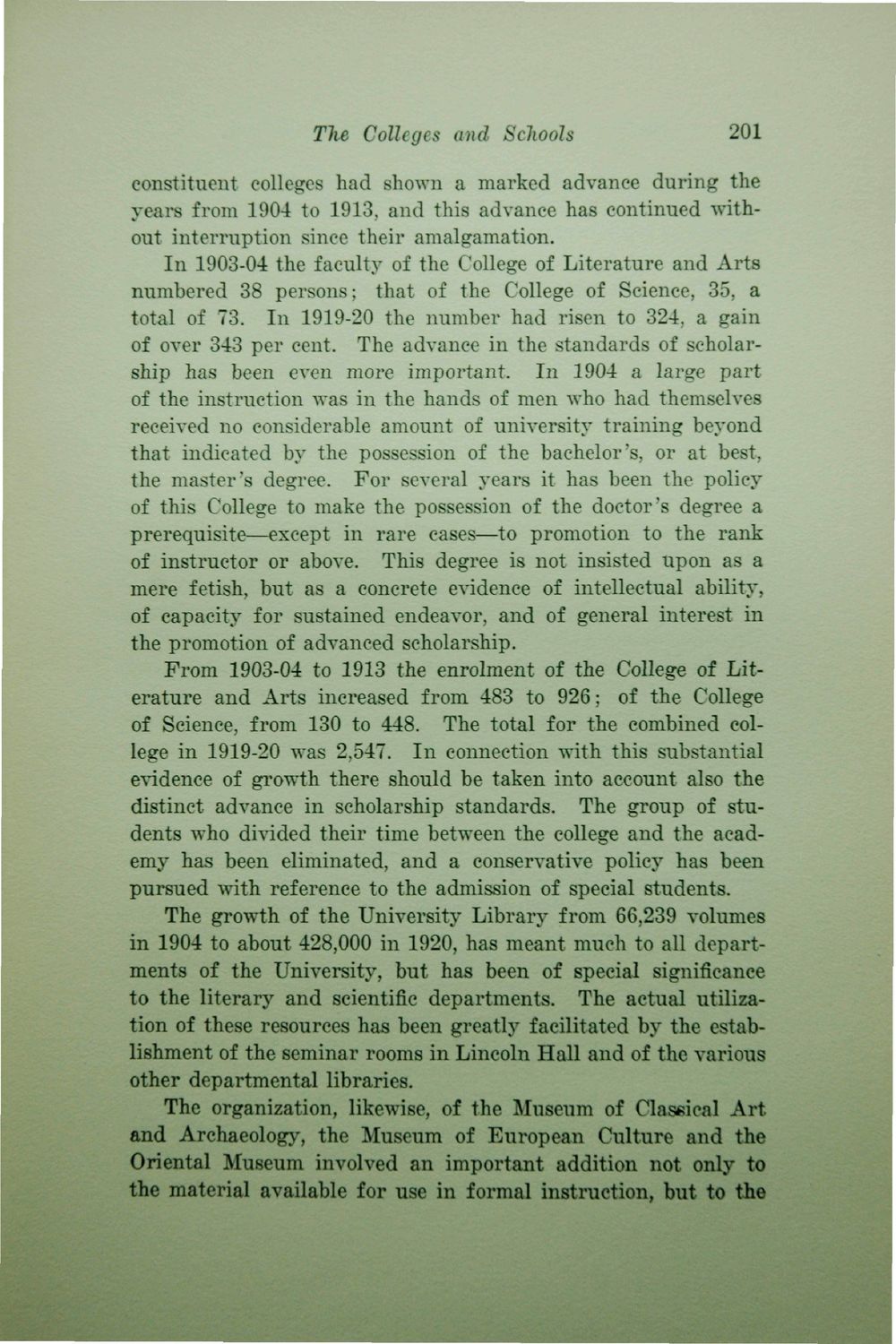| |
| |
Caption: Book - 16 Years (Edmund James)
This is a reduced-resolution page image for fast online browsing.

EXTRACTED TEXT FROM PAGE:
The Colleges and Schools 201 constituent colleges had shown a marked advance during the years from 1904 to 1913, and this advance has continued without interruption since their amalgamation. In 1903-04 the faculty of the College of Literature and Arts numbered 38 persons; that of the College of Science, 35, a total of 73. In 1919-20 the number had risen to 324, a gain of over 343 per cent. The advance in the standards of scholarship has been even more important. In 1904 a large part of the instruction was in the hands of men who had themselves received no considerable amount of university training beyond that indicated by the possession of the bachelor's, or at best, the master's degree. For several years it has been the policy of this College to make the possession of the doctor's degree a prerequisite—except in rare cases—to promotion to the rank of instructor or above. This degree is not insisted Upon as a mere fetish, but as a concrete evidence of intellectual ability, of capacity for sustained endeavor, and of general interest in the promotion of advanced scholarship. From 1903-04 to 1913 the enrolment of the College of Lifrerature and Arts increased from 483 to 926; of the College of Science, from 130 to 448. The total for the combined college in 1919-20 was 2,547. In connection with this substantial evidence of growth there should be taken into account also the distinct advance in scholarship standards. The group of students who divided their time between the college and the academy has been eliminated, and a conservative policy has been pursued with reference to the admission of special students. The growth of the University Library from 66,239 volumes in 1904 to about 428,000 in 1920, has meant much to all departments of the University, but has been of special significance to the literary and scientific departments. The actual utilization of these resources has been greatly facilitated by the establishment of the seminar rooms in Lincoln Hall and of the various other departmental libraries. The organization, likewise, of the Museum of Classical Art and Archaeology, the Museum of European Culture and the Oriental Museum involved an important addition not only to the material available for use in formal instruction, but to the
| |